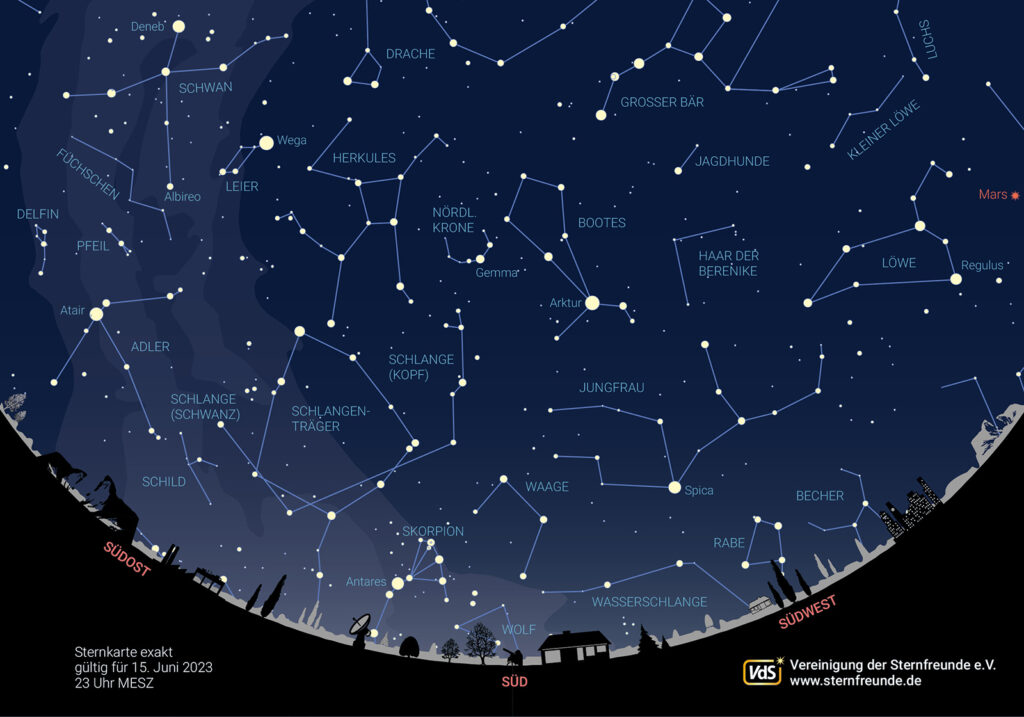The starry sky in June 2023
The nights around June 21, when the sun only sets for a short time, i.e. when it is still at least twilight or even daylight, are called The White Nights called. In Germany, this phenomenon can only be observed in the northernmost parts between Flensburg and Sylt. Here in Zweibrücken, the sun only sinks to just under 18 degrees below the horizon during this time, which is still enough to prevent it from becoming completely dark astronomically. The term was used in literature as early as 1848 in the novel White nights by Fyodor Dostoyevsky, albeit in a slightly different context.
SUN AND MOON
The summer solstice, i.e. the longest day of the year, is on June 21. The sun rises at 5:21 a.m. CEST and sets again at 9:43 p.m. CEST. The length of the day is therefore an impressive 16 hours and 22 minutes.
The full moon on 4 June passes by Antares, which is often mistaken for Mars due to its reddish color, the night before. The name Antares comes from the Greek and means "opposite Mars". On June 14, the waning moon passes the planet Jupiter in the morning sky. On June 21, there is another beautiful view of the sky when the waxing moon passes Venus and Mars in the evening sky.
PLANETS
Mercury is not visible in the night sky in June.
Venus continues to dominate the evening sky. On June 4, it reaches its greatest angular distance from the sun at 45° 24' and is half illuminated with a diameter of just under 24".
Mars can only be seen in the evening sky.
The name after the main Roman god Jupiter named planet can increase its morning visibility. If the -2.2 mag bright variable star rises at 3:57 a.m. CEST on the first of the month, the rises will be even earlier at 2:12 a.m. CEST at the end of the month.
Saturn will continue to rise earlier to 0:16 CEST over the course of the month. On June 30, it becomes an object of the second half of the night. It will take until opposition at the end of August.
Uranus continues to hide in the daytime sky, it remains invisible.
Neptune rises early, but remains uninteresting.
STARRY SKY
The firmament has not yet completed its transition to the summer constellations.
On Western sky the constellations Leo and Virgo can still be seen. The Great Bear can also be found in western regions.
Lower on Northern sky the "celestial W", Cassiopeia and Cepheus. Perseus and the carter can be glimpsed just on the horizon.
In the East the so-called summer triangle has already risen. This consists of the bright stars Vega in Lyra with the beautiful planetary ring nebula M57, Deneb in Swan and Atair in Eagle, which is still somewhat close to the horizon.
The Southern sky already shows us the prominent Scorpio with the aforementioned star Antares, 600 light years away, a red giant with a diameter of around four astronomical units (one AU corresponds to the Earth's orbital radius). The sun with the Earth's orbit would fit comfortably inside it.
About us are the constellations Bootes, the Northern Crown and the inconspicuous Hercules.

